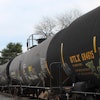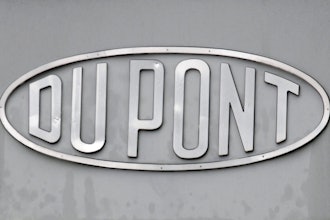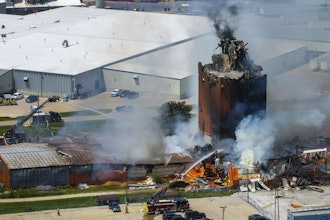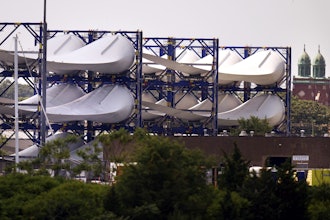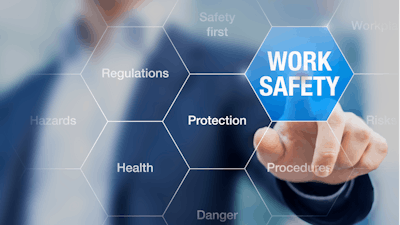
Safety is a non-negotiable aspect of any manufacturing environment. Whether it's an assembly line or a chemical processing unit, there’s always the potential for accidents. Sensor technology plays a pivotal role in mitigating these risks. This article will guide you through a six-step process to effectively leverage sensor technology for improving safety in your manufacturing operations.
Step 1: Understanding the Basics
Sensor technology has become a fundamental component of modern safety measures in manufacturing. The technology encompasses a variety of sensors that monitor specific variables, including temperature, motion, gas and pressure. Understanding the different types of sensors and their specific applications is the first step in using sensor technology effectively. Armed with this knowledge, you're better equipped to identify the crucial safety risks in your manufacturing environment.
Step 2: Identifying Safety Risks
The first line of defense against accidents is identifying potential safety risks. Sensors can be your eyes and ears, providing real-time data that can be analyzed for potential hazards, including mechanical failures that can lead to equipment damage and severe injuries or chemical spill risks such as fire, explosion, and toxic exposure. A sensor that detects chemical imbalances can trigger an alarm, allowing for immediate corrective action.
Electrical hazards include the possibility of electrocution or electrical fires. Electrical sensors can monitor circuit loads and trigger circuit breakers when anomalies are detected.
Risk assessments are a proven strategy for identifying these hazards. They involve a systematic evaluation of the workplace, often using sensors to collect data. The data is then analyzed to pinpoint areas where preventive measures are most needed. In addition to identifying hazards, risk assessments also prioritize them based on the level of threat they pose. This enables targeted interventions, ensuring that the most critical safety issues are addressed first. Integrating risk assessments into your safety protocols creates a more proactive and responsive safety environment.
Step 3: Choosing the Right Sensors for Your Needs
After identifying safety risks in your plant, the next step is selecting the appropriate sensors. Factors such as sensitivity and range are crucial. A highly sensitive gas sensor, for example, is ideal for detecting trace amounts of toxic gas. Range is important for large manufacturing floors where a sensor needs to cover significant area. Cost is another factor. While high-quality sensors may have a higher upfront cost, they often offer better long-term reliability and performance.
Here is a basic checklist for selecting sensors:
- Identify the risk — understand what you're trying to prevent to choose the most effective sensor.
- Determine the range — make sure the sensor can cover the necessary area for effective monitoring.
- Budget allocation — consider both upfront and long-term costs.
- Compatibility check — ensure the sensors can integrate seamlessly with existing control systems.
Step 4: Implementation
Implementing sensor technology in a manufacturing facility is a multi-step process that requires careful planning and execution. The journey begins with a comprehensive system assessment, where you identify the optimal locations for sensor placement based on the safety risks you've identified. The next step is the installation of the sensors, which should be performed by qualified technicians to ensure accuracy and reliability.
Once the sensors are installed, the next critical step is calibration. This ensures that the sensors are finely tuned to detect specific variables. Rigorous testing follows calibration. During this phase, you should simulate various scenarios to confirm that the sensors and the monitoring system respond appropriately.
With manufacturing safety constantly improving, another great asset is becoming an indispensable part of safety protocols — connected worker technology. This technology enables real-time communication between the workforce and the sensor monitoring system.
For instance, smart sensors can detect an abnormal rise in the temperature of a critical machine. The data is then sent to the cloud-based monitoring system, which processes and analyzes the information. Within seconds, a connected worker receives an alert on their smart device prompting them to shut down the machine and investigate the cause of the temperature spike.
Keep in mind that implementing sensors and advanced technologies comes with a price tag, and one of the most common challenges in the implementation is the high upfront cost. A detailed ROI analysis can often justify this investment by highlighting the long-term safety benefits and potential cost savings from avoiding accidents and equipment failures.
Step 5: Monitoring and Data Analysis
Continuous monitoring is the cornerstone of maintaining an effective sensor technology system in manufacturing. Sensors are designed to provide real-time data, but this data is only as useful as the system that monitors it. The immediate benefit of continuous monitoring is the ability to take quick corrective actions.
While monitoring provides immediate benefits, data analysis serves the long-term objectives of safety and efficiency. By collecting and analyzing data over time, you can identify patterns and trends that may not be immediately obvious. If a temperature sensor records higher-than-normal temperatures consistently, this could indicate a potential issue that needs to be addressed before it leads to a machine failure or fire.
The immediate benefits of monitoring and data analysis are clear: rapid response to safety hazards and prevention of accidents. However, the long-term benefits are just as significant. Consistent data analysis leads to improved safety protocols, more efficient machinery, and ultimately, a safer and more productive work environment.
Step 6: Ensuring Compliance
Ensuring compliance with safety standards is both a legal requirement and a moral obligation. A checklist for ensuring compliance might look something like this:
- Regular audits: Frequent safety audits ensure ongoing compliance and identify areas for improvement.
- System updates: Regularly update the sensor technology to meet the latest safety standards.
- Documentation: Maintain meticulous records of sensor data, calibrations, and safety incidents for legal and inspection purposes.
Documentation isn’t just a bureaucratic requirement but can be a lifesaver during surprise inspections, proving your commitment to safety.
Sensor technology is an invaluable asset for manufacturing safety. From understanding the basics such as selecting appropriate sensor types, optimal placement, calibration, and data interpretation to ensuring compliance with safety standards, each step in sensor implementation is crucial. The sooner you set up sensor technology in your facility, the sooner you’ll achieve a safer and more efficient manufacturing environment.
For over 30 years, Eric Whitley has been a leader in the manufacturing space. After an extensive career as a reliability and business improvement consultant, Eric joined L2L, where he currently serves as the Director of Smart Manufacturing.


